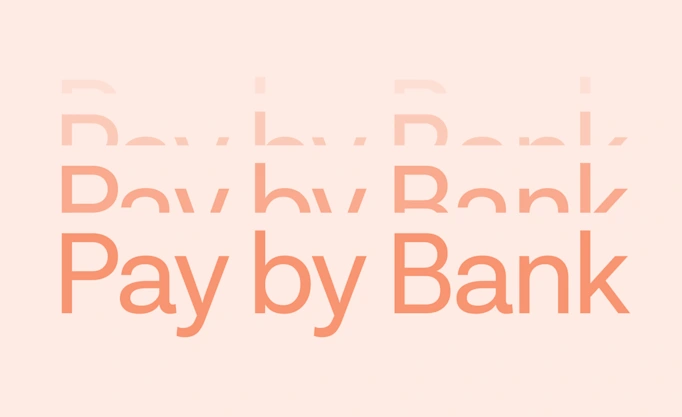Emerging open banking strategies

Digital transformation and open banking are unlocking opportunities for financial institutions to generate revenue in completely new ways. Discover the four paths institutions can take, depending on how they choose to leverage open APIs.
Digital transformation and open banking are unlocking opportunities for financial institutions to rethink their business models and generate revenue in new ways.
There are four paths institutions can take, ranging from an initial step of compliance to a Banking-as-a-platform offering.
These strategies are not mutually exclusive, and can be used in combination to meet different business objectives.
To expose, or consume open banking APIs? That is the question. And financial executives are now confronted with choosing their answer.
Of course – there is no right or wrong here. The answer will depend on the organisation’s goals and where they want to position themselves in the future. Beyond the initial step of Compliant banking – making APIs available to third parties – there are three emerging archetypes that characterise the role financial institutions can take in relation to open banking.
Emerging open banking archetypes

Here's a closer look at each one.
Compliant banking
Europe’s PSD2 requires institutions to give authorised third-party providers (TPPs) access to customers’ payment accounts. And as they are regulated, European financial institutions have no option but to comply. While PSD2 doesn’t prescribe specific technologies or standards, most banks have opted to provide a dedicated interface in the form of PSD2 APIs. These let TPPs identify themselves towards the bank, access the customer’s data and initiate payments in a secure way.
In this model, institutions are just complying by exposing the APIs – and not actively seeking to unlock new revenue streams or enable operational efficiencies.
Enhanced banking
With a large increase in the number of TPPs in the last year, it’s hard to ignore the value they are bringing to market. These companies have been particularly good at improving specific steps of the customer journey – whether it’s customer acquisition, hyper-personalised experiences, or loyalty.
When opting to go with an Enhanced banking strategy, institutions can act as TPPs, and take advantage of the open banking APIs themselves.
By taking this route, organisations can use open banking to enhance digital services or streamline operations with the aim to increase revenue, reduce costs, and lower risk.
Banking-as-a-service
Banking-as-a-service (BaaS) describes financial institutions that are making their core services available as a utility for external parties, so – unlike the first two archetypes – they’re also sharing the value chain.
These services would often be positioned as premium APIs, which generate new revenue streams. (In this model, institutions need to be careful when it comes to charging a premium for customer data as regulations may prohibit this.)
The true value from BaaS comes from helping external parties create embedded finance experiences by letting them offer, leverage, or provision financial services via APIs in real time. Examples of financial institutions that would fit this archetype include incumbents such as BBVA with its API Market in Spain, but also pure-play providers such as Solarisbank in Germany.
Banking-as-a-platform
Ultimately, financial institutions may choose to operate as intermediaries themselves. Not just to provide their own core banking services as a utility, but allowing TPPs to build products and services for their customers.
Banking-as-a-platform (BaaP) suggests that financial institutions can work together with TPPs to build a joint revenue-sharing proposition for customers in a much more affordable, scalable and impactful way.
This strategy isn’t just about generating revenue – it’s also a way for banks to build an ecosystem, form new partnerships, and reach new customers. For example, BNP Paribas Group is pursuing what it calls the ‘financial companion’ model. That means the bank will strive to strike partnerships around the services that are relevant to its customers while forming close partnerships with fintechs in the industry.
What’s the best choice?
It’s good to keep in mind that these strategies are not mutually exclusive, and can be used in combination to meet the objectives of different parts of the business. For instance, the consumer finance arm of a large bank may take the BaaS route in order to enter new markets, while the mortgage business goes with Enhanced banking to accelerate credit risk assessments.
Currently, it seems that the Enhanced banking archetype (with proven TPP use cases) is a good bet, as it lets banks focus on low hanging fruit while maintaining control of the value chain.
The archetypes that require institutions to share their value chains take more time to capitalise and have yet to prove commercial success for large financial institutions. But as mentioned – it could be a good choice depending on the company’s long-term objectives and how they want to position themselves in the market.
We’ve previously explored these emerging open banking archetypes in our report titled ‘The open banking revolution’. Check it out for more on the subject – and the broader context of how open banking is changing things up for the industry.

Tink survey report
Find out more about how financial executives view the impact of open banking, and what they’re looking to enable with the new capabilities.
Read the reportMore in Open banking

2024-11-19
12 min read
From authentication to authorisation: Navigating the changes with eIDAS 2.0
Discover how the eIDAS 2.0 regulation is set to transform digital identity and payment processes across the EU, promising seamless authentication, enhanced security, and a future where forgotten passwords and cumbersome paperwork are a thing of the past.
Read more

2024-10-08
6 min read
Lending essentials: how enriched data solutions help lenders tackle constraints
Enhancing your affordability assessment with Tink’s data-enriched solutions helps you put an end to inaccurate data, prevent fraud in loan origination and stay compliant – read on to explore the benefits.
Read more

2024-09-24
4 min read
Why Pay by Bank fits luxury retail like a glove
Pay by Bank offers a solution that addresses the potentially higher transaction fees and fraud risks while enhancing the customer experience for luxury retailers.
Read more
Get started with Tink
Contact our team to learn more about what we can help you build – or create an account to get started right away.
